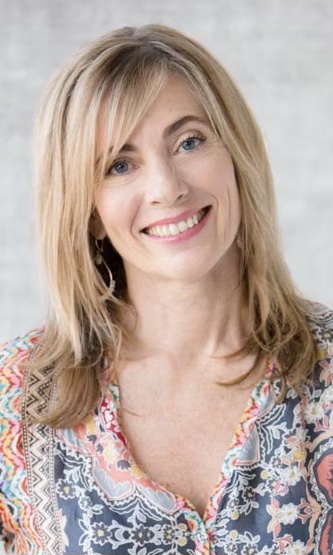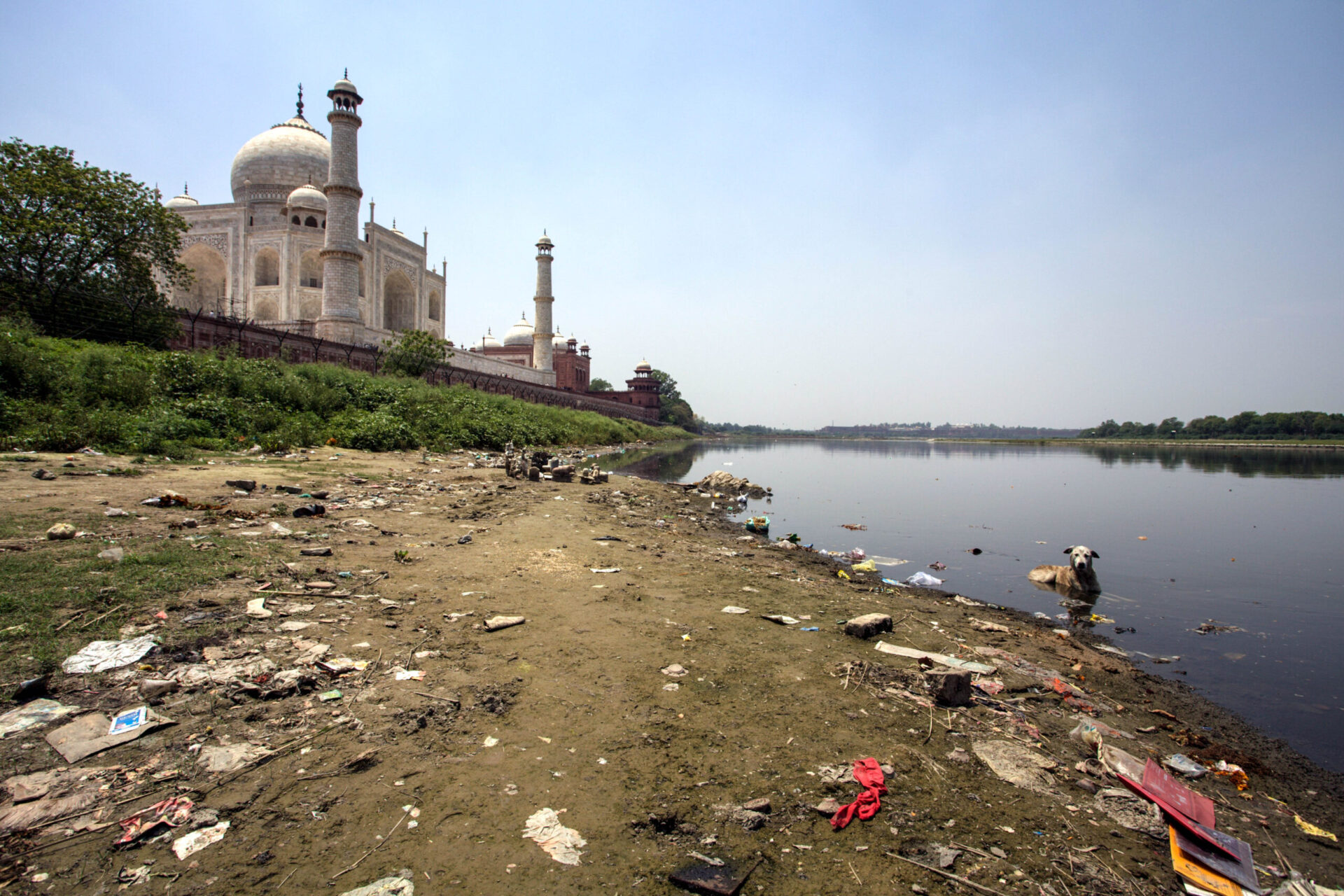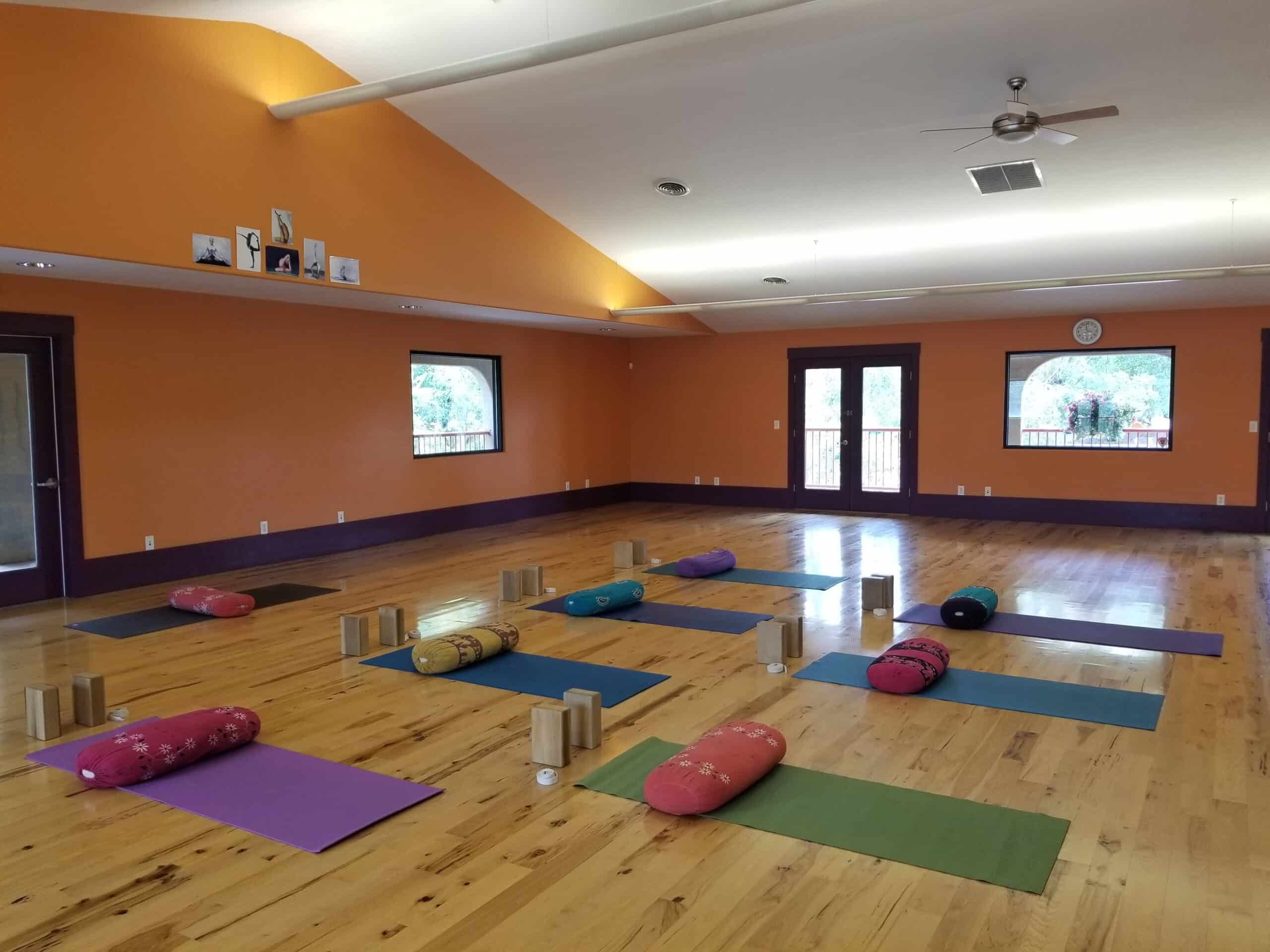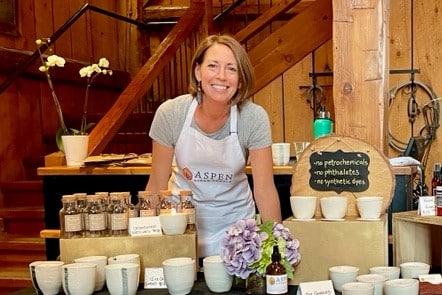Traveling the World as a Practice of Compassion : Q+A with Jennifer Prugh
With pandemic restrictions keeping us in place the past year, it’s not uncommon for the travel bug to be creeping up as social distancing and travel guidelines are lifting. According to author, yoga teacher and world traveler Jennifer Prugh, traveling with awareness makes “moving around the globe a practice of compassion.”
YOGA + Life® caught up with Prugh to hear how her yoga practice has evolved this past year and what she’s looking forward to next.

Jennifer Prugh
What is a day in your life like?
Since the beginning of COVID, a day in my life has looked like being in my house with my husband, 17-year-old son and two golden retrievers overseeing the workings of a large yoga studio in Los Gatos, California. At the beginning of COVID, we made all of our classes digital. For the last year, I sat in a room, stared into a camera and taught yoga, dharma and meditation. I’ve continued to run teacher trainings for burgeoning yoga teachers on Zoom. A few years ago, we converted our yard in our very urban San Jose neighborhood to a lush jungle, so meetings with students and colleagues are often on the phone while weeding and pruning. This month I leave the house a couple of days a week to teach at our studio (Breathe Together Yoga) as we, fingers crossed, open back up. Until COVID, I ran at least four international retreats a year. My intention for the days going forward is to better balance activity with the peace of family and the garden.
How would you describe your personal yoga practice?
I rely upon Patanjali’s eight limbs of yoga to inform my practice. One could say that a more contemporary interpretation of the eight limbs would mean that the first two limbs, the ethics of yoga, are practiced every moment of every day. Within the first two limbs, there are 10 guidelines that encompass a way in which we can bring less suffering to ourselves. Being a kind person to the best of my ability, telling the truth, acting on generous thoughts, spending our precious time and energy well, being present, for example. The ethical guidelines are preliminaries. They set up the conditions for our formal practice, but “being here now” and my practice attempts to be a full-time job.
If asana, the third limb of yoga, means seat, I move my body each day in a way that supports being able to “sit with myself.” I’ve created four series of postures called Tapas, which takes into account changes of the seasons. Some days I’m agitated, so I may need a more breath-based flow practice. Some days I investigate an old posture from the Hatha Yoga Pradipika, for example. I consider ways to prop and support it, or what it’s use might have been to those that practiced it then. And then I consider its potential use now. I attempt to meet my body wherever it is on a given day. Once seated, focus on the breath, turn inside, sit. I sit every day, in the morning and at night. That provides the chance to meet anything inside that I might not want to feel, that I might have been avoiding. I like what Sharon Salzburg says about meditation; it is about “beginning again” rather than stilling the mind. Oh look! We wandered off again, let’s gently come back, apply non-judgmental awareness, be present, until the next time we wander, which is inevitable.
The investigation I do in my own practice is passed on to my students.
As a leader of local, national and international yoga journeys and teacher trainings, what does travel mean to you and how can it enhance a yogic lifestyle?
Before COVID I would have said that if we have the opportunity to travel, we should take it. Traveling with any kind of meditation or awareness practice turns moving around the globe to a practice of compassion. What is it like to stand in someone else’s shoes? Imagine what it would be like to live in the country we’ve visiting. And when we look back on our country, we see that what we say about how “it is” is a series of agreements we have all made about how it is, but we forgot (mass shootings in America are a good example. Somehow, we’ve all subconsciously bought into this notion that this is “just how things are now.” No, unlike the majority of other countries, we made it that way). Travel helps us understand ourselves and the world. And if we build relationships in other countries, more and more of the world becomes “us” instead of “them.” (Because it is in fact, all us). Now, after COVID I would say travel as consciously as possible. Let’s keep our footprints as light as possible. Leave the place better than we found it in our own unique ways. And if travel isn’t an option, a good walk to a neighborhood we don’t often visit can be a travel experience in and of itself when we’re paying attention.
What has been your most profound traveling experience thus far?
I’ve dedicated most of my adult life to learning how the people on both sides of the Himalayas, in India and Tibet, have, over the centuries, understood and articulated the potential of their bodies and minds. So, any time I’ve traveled to those mountains, whether it was Bhutan, Ladakh, Tibet, Nepal has been surreal. From overhead, those unspeakable mountains look like a great sea!
There was a time in 2010 where I visited a small Tibetan enclave in northern India called Clement Town. The people who moved there had traveled over the mountains with the Dalai Lama when he was forced to escape. They were given this piece of land and they’ve made this beautiful village. This story is in my book, River of Offerings, but I began supporting the education of children of Tibetan refugees because every Tibetan I met was so inherently kind. I was given this chance to enter the Tibetan Buddhist stupa and take the stairs to the top. From there I watched this old Tibetan nun with a walker, take one step around the stupa, step by step. She came to do this every morning. She walked what was likely about a mile so, so slowly. She greeted everyone she met. Watching her changed my understanding of yoga. Yoga is about union, right? All the teachings come alive through presence. Just making contact with another human being with all our vulnerability. It’s not about the place. All the people in those mountains who were willing to be photographed, to be seen, to meet me as they were. Any time we can just be together is a profound traveling experience.
Tell us more about your book, River of Offerings, and how it came to life.
I had begun taking groups to India in 2010, but it wasn’t until 2015 at the Kumbh Mela at the confluence of the three sacred rivers that I decided to actually compile my experiences into a book. Every trip I had taken thus far had happened to be along the Ganges, or Ganga, this goddess of a river that everyone in India has worshipped for centuries. I saw a palpable devotion that I found riveting. In the United States the closest we come to devotion to nature is through our National Parks. But it’s a complicated story, because while she is revered, she is also one of the most toxic rivers in the world. So, I decided to go to the significant places along the river that I hadn’t seen yet as a way to learn more deeply about this river. Little did I know that I’d get caught in a monsoon in the Himalayas that killed over 12,000 people or spend three days inside cremation grounds in Varanasi or photograph the young men with polio in Haridwar or learn about delicate ecosystems just off of Bangladesh where the river joins the sea.
What do we have to look forward to from you in the future?
Writing River of Offerings has taught me a lot about the unique role each of us plays in leaving the world a little better than we found it. The next wave of human challenge after COVID looks to be climate change. Yoga and mind-body practices help us to center and be present. I see that as the beginning. We need embodied awareness tools so that we can get quiet enough in ourselves to hear, as my father used to say, “the still small voice within.” What are we made for? How best can we serve?
My studio and school, Breathe Together Yoga, has added a new platform of videos and articles (called Bto.tv) by teachers and experts in the field of yoga and mindfulness who are dedicated to supporting wellbeing for ourselves, but also for our planet. How do we create a world where people know how to take care of themselves and each other? We’ve forced ourselves into a corner. We all must learn how to address this question. I look forward to making that work available through a series of courses. And I’m thankful to Mandala Publishing who will be publishing River of Offerings as an e-book soon.
Jennifer Prugh is the founder of Breathe Together Yoga, two yoga studios, a wellness center and a teahouse in Silicon Valley, California and the JOY of Yoga School of Integrative Learning. With eight years as an associate professor of storytelling, storyboarding, creativity and mythology, and 10 years as a professional artist, Jennifer is passionate about making traditional yoga and mind/body practices accessible, so that students are enabled to develop a consistent personal practice that supports a meaningful life. Jennifer is certified as a yoga therapist through the International Association of Yoga Therapists. Since 2009, she has led international journeys and retreats throughout the world. Jennifer is a board member of the Tibetan Children’s Education Foundation. She lives with her husband, Will, their teenage son, Liam, and two golden retrievers, Hobbes and River.
Photos courtesy of Insight Editions.
Optimize your immune system with nourishing herbs such as Elderberry, Burdock, Nettles, Cleavers and Astragalus. Serve yourself up [...]

Subscribe to Our Tribe
Stay up to date with Y+L News, Events and special announcements.










